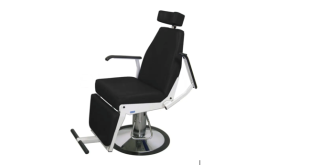Wool
Sheep’s wool is the base material for the vast majority of men’s suits and the higher end of men’s overcoats. Finished bolts of cloth woven from wool can vary dramatically depending on the type of wool used, the method used for spinning the threads, the weave that joins the threads, and many other factors. Wool is not a single, uniform clothing option.
There are so many kinds of wool (including exotic options from animals other than sheep), and because it can be spun and woven in so many different ways, the material is also incredibly versatile. It can be used to make everything from coarse, hairy tweeds to ultrafine jackets with an almost silken hand feel.
Linen
Every man owns clothing made from wool and cotton at some point in his life. They are fundamental defaults of the clothing industry. Not so with linen. Some men go their whole lives without ever touching the stuff. Linen is a plant fiber, like cotton, but the flax that it comes from is much more costly to grow and to turn into threads for weaving. In menswear, its primary use is for summer-weight clothing, particularly in Europe. Almost any basic garment can be made from linen, including jackets, trousers, and shirts.
Silk
For all its recognition as a luxury fiber, silk is only of limited value in menswear. Pure silk suits are essentially novelty items. It’s more common as a lining material, and even then it tends to be more delicate and temperamental than simpler, more functional synthetics. The most common (and practical) use for silk in menswear is as a light, breathable shirting fabric for tropical climates. It also sees use in traditional nonWestern garb, where it can be wrapped and folded in multiple layers to create a sturdier outfit than a basic business suit.
Artificial Fibers
There are enough different kinds of synthetic fibers that it’s hard to lump them all into a single category. Some are designed to be blended with natural fibers. Many suits, for example, including some quite expensive ones, will be 98% or 99% wool, rather than 100%, with the small non-wool percentage comprised synthetic strands that help give the wool fibers a strong “backbone” for added durability. Others are used to create whole cloths, usually as a cost-saving measure. Polyester shirts are famously cheap — and famously tacky, with shiny surfaces and an unpleasant, plastic-like feel against the skin. Still more are used as liners, providing a sturdy shape for suit jackets and adding a mildew-resistant inner layer.
And modern athletic wear has seen the development of new fibers designed for flexibility, lightweight, and ultra-fast water evaporation, not to mention breathable waterproofing for outerwear.
Comment
The takeaway there is that you shouldn’t plan on owning a lot of clothes made from synthetic fibers — but there’s nothing wrong with owning a few if they serve a specific purpose. It’s the cost-saving blends of cotton or wool with cheap synthetics like rayon and polyester that you want to avoid. Those do nothing but drag down the quality of your clothing, while adding little in the way of practical benefits.






